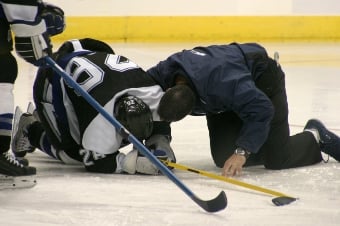Similar to disability insurance, the plans are more suited to the protection needs of professional athletes

Even with the many layers of personal protective equipment they wear, hockey players face significant risks of injury when they step onto the ice. Aside from the natural peril in playing on a frictionless surface, the sport puts them in danger of getting struck by hockey pucks and taking dirty hits.
Fortunately, players for the National Hockey League (NHL) can expect their contracts will continue to be paid out if they are injured while playing for their club. But that doesn’t preclude them from getting injured outside of an official game — while they’re doing some personal training, for example. To protect themselves from that risk, they can avail of athlete disability insurance.
“Most people are familiar with disability insurance,” wrote Brandon Hill, CFP for TheHockeyWriters.com. “[But] rather than locking in coverage to pay out future monthly payments (used to replace all or a portion of income while unable to work), athletes’ policies are structured to pay out one sum, and in some cases that can be tens of millions of dollars.”
As Hill explains, athletes use this type of insurance to cover their contract as well as protect their potential earnings. It comes with two different coverage options: 24-hour coverage, which provides cover related to NHL duties as well as activities during their personal time; and off-ice coverage, which considers only activities and time unrelated to their NHL employment.
“Young players will typically blend a combination of both as their contracts are much smaller in size and length,” Hill said. “[V]eterans on long-term deals might focus on off-ice coverage, as their contract size and duration provides financial protection from NHL-related injuries.”
The NHL clubs and the NHL Players’ Association (NHLPA) reportedly provide players with two layers of disability insurance for potentially career-ending injury or sickness; the main coverage is a fixed amount that’s based on the player’s age at the time.
According to Hill, athlete insurance is so crucial that it’s played a role in decisions involving international competition. Recently, the NHL opted not to send delegates to the 2018 Winter Olympic Games as owners were concerned about their players getting hurt, as well as who would pay to insure the clubs from financial losses should they lose star players to injury.
“There were also rumours that this was a major reason John Tavares didn’t attend the 2018 World Hockey Championship with Canada,” Hill said. “As an unrestricted free agent this summer looking to sign a major long-term deal (and who has been injured in international competition before), he would be taking a financial risk by exposing himself to injury.”
According to Hill, Tavares would have required coverage somewhere in the mid-8 figures if he had attended the event.
Related stories:
Blindside hit leaves Manitoba hockey player with $30,000 dental bill
Ex-CFL player’s plight reflects gap in athletes’ benefits



